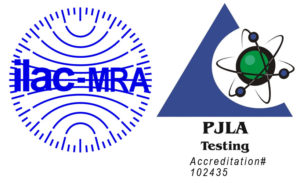Dynamic Peel Analysis Demonstrates Package Seal Failure Not Predicted …
Food Analysis
by | Adhesion Society 1997 | Publications, Food Analysis
Dynamic Peel Analysis Demonstrates Package Seal Failure Not Predicted By Standard Peel Tests
21st Annual Meeting of the Adhesion Society, Proceedings, 150, (1997)
J. C. Conti,1,2 Ph.D., E. Jones,1 E. Strope,2 Ph.D., and D. Rohde2
1 Southwest Missouri State University, Springfield, Missouri
2 Dynatek Dalta Scientific Instruments, Galena, Missouri
Adhesion Society 1997
Introduction
The packaging industry experiences many unpredictable seal failures before, during, and after the development and manufacturing procedures associated with new packaging. Many of these failures are similar to unpredictable failures found in adhesive joint applications. The magnitude of peel adhesion of elastomerically coated adhesive tapes is strongly dependent on the viscoelastic properties of the adhesive [1-3]. The failure mode is also a function of the viscoelestic properties of the adhesive [4-5]. Because the mechanical properties of viscoelastic materials are time-dependent, it is important to understand the influence of loading rate and frequency when evaluating a peel process.
The peel adhesion of viscoelastic rubber adhesives shows a number of different pull rate dependent modes of peeling, including peeling with a viscous adhesive response, peeling with a rubber response, and oscillatory peeling [6]. There is a relationship between peel force and velocity as well as loss modulus and frequency in dynamic mechanical experiments [7-8].
One possible explanation for this unpredicted failure phenomenon was addressed in a series of experiments that demonstrated that sub-critical dynamic loading could elicit peel failures in commercially prepared peelable samples [9].
Single-Pull Tests
Experimental
Sixty-three samples of Lay’s potato chip bags had their top, bottom, and back seals cut into 4mm wide strips such that the seal had two 2cm long legs projecting from it. These seals were tested in a 180° peel mode under stroke control at a peel rate of 1mm per second.
Results
Table 1 is an example of SC & O results from the back seal.
Table 1
Sample# First Yield (g) Distance (mm)
80 85.24 0.89
81 92.34 0.74
82 88.76 0.73
83 96.46 0.71
84 87.66 0.48
91 97.35 0.58
92 101.26 1.87
93 81.97 1.22
95 77.55 2.08
96 72.84 1.85
Table 2 is similar data from the KCM samples.
Table 2
Sample# First Yield (g) Distance (mm)
137 53.5 0.76
138 59.96 0.81
144 85.67 0.97
146 91.43 0.88
148 73 1.02
149 47.5 1.03
151 106.28 2.28
152 77.13 2.50
153 86.22 1.67
154 97.81 2.12
155 58.5 1.97
156 105.7 0.69
157 69.38 1.27
Tables 3 shows a summary of the results of this initial single pull test. In general, the load to first yield of the seals vary from 51 to 88 grams, depending upon the location of the seal. It was also found that the type of potato chip in the bag seems to have a slight influence on the magnitude of the load at first yield. This could be due to a number of manufacturing variables including a difference in the sealing machine.
Table 3 (1)
Type Top Seal
Load (g) Displacement (mm)
SC & O 51.4±23.4 1.18±0.52
KCM 68.7±14.1 1.39±0.37
Back Seal
SC & O 88.1±9.1 1.12±0.6
KCM 77.9±19.6 1.38±0.64
Bottom Seal
SC & O 73.7±21.9 1.42±0.41
KCM 81.5±16.6 0.97±0.35
(1) Load to First Yield
Cyclic Testing
Experimental
An additional sixty samples from these same Lay’s potato chip bags were mounted on the same tester. In this case, however, the instrument was set to subject the samples to a load controlled dynamic peel such that the sample was loaded sinusoidally from 0 to 40g (well below the first yield point) at a frequency of 8Hz.
Results
Table 4 is a summary of the results of the dynamic peel testing. As shown, failure of the seal resulted in every case within several thousand cycles in spite of the fact that the seals were loaded at a sub-critical level.
Table 4
Type Cycles to Yield Displacement
Top Seal
SC & O <1000
KCM 5000-6000
Back Seal
SC & O 3000-5000
KCM 5000-6900
Bottom Seal
SC & O 30,000
KCM 7500-10,000
Discussion
This experiment indicates that standard single pull peel testing does not predict the catastrophic failure of seals that will be exposed to cyclic loading in actual or field use. It is possible that this repeated stressing effect is responsible for at least some of the unpredicted package failures encountered by manufacturers and packaging professionals. Such unpredictability requires packaging engineers to overdesign the adhesive joints that make up most packaging seals. It is our conclusion that comprehensive testing of packaging seals should include an evaluation of the dynamic peel properties of the seals.
References
1. D.H. Kaelbe, J. Adhesion 1, 102 (1969).
2. A.N. Gent and R.P. Petrich, Proc. R. Soc. London Ser. A310, 433 (1969).
3. E.H. Andrews and A.J. Kinloch, Proc. R. Soc. London Ser.A332, 385 (1973).
4. D.H. Kaelbe, J. Colloid Sci. 19, 413 (1964).
5. D.W. Aubrey, Ned Rubberind 36 (2), 1 (1975).
6. D.W. Aubrey and M. Sheriff, J. Polmer Sci., Polymer Ed. 18, 2597 (1980).
7. A. Mayer, T. Pith, G. Hu and M. Lambla, J. Polymer Sci. Part B: Polymer Physics, 33, 1781, (1975).
8. Ibid, 33, 1793 (1995).
9. J.C. Conti, E.R. Strope and E. Jones, Proceedings of the 20th Annual Meeting of the Adhesion Society, 425-427, (1997).



